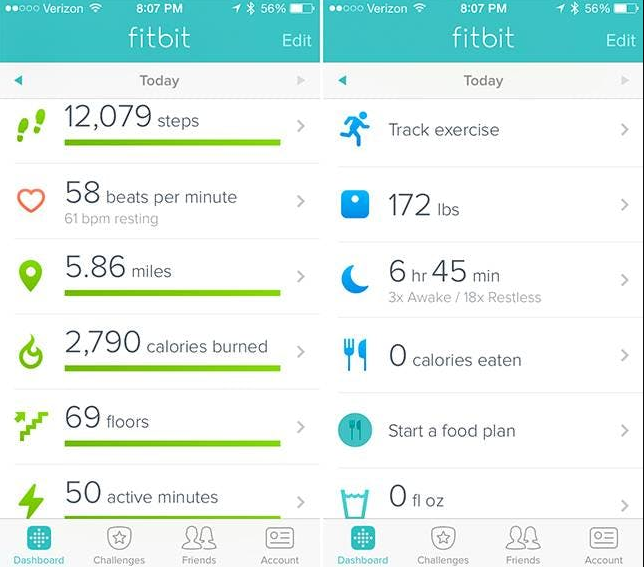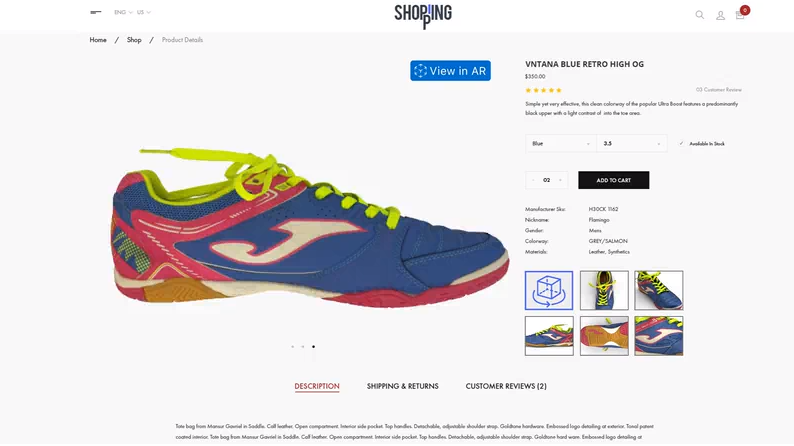With many businesses appearing on the market, it gives more power for customers to choose different alternatives available in the marketplace. It is no wonder that business owners try to better understand their customers’ requirements and give them a great experience.
Meeting customer expectations is a challenging task. According to Salesforce, 67% of customers report higher standards for good experiences than ever. Today’s online businesses must find the right technology to handle customer service efficiently and create a more personalized experience.
10 Best Technologies to Improve Customer Experience
1. Cloud Softphone: Develop Unified Communication
Customers want more human interactions while engaging with a brand, while companies want to cut their communication costs and provide high-quality services to their clients.
Fortunately, many communication service providers continue innovating and improving their services by leveraging a white-label platform like Cloud Softphone.
This software allows business owners to bring personalization into client interactions and build the desired experience. A White Label Softphone will enable you to use a computer, tablet, or phone to place internet-based calls. Its user-friendly interface allows this software to operate entirely on the cloud like a traditional phone.
Users can dial numbers from anywhere with an internet connection and access other VoIP telephony features. Softphone services give more accessibility, protection, flexibility, and mobility in business communication.
Moreover, Cloud Softphone supports all major Android and iOS devices and updates. You can save on development and maintenance costs to focus more on your core services to operate efficiently. Once your business amplifies, you can easily add new features and scale with that development.
2. Chatbots: Enhance Responses
Many marketers think that using chatbots in customer service is the way of the future. According to Forbes, 70% of millennials have a positive experience with chatbots for immediate satisfaction and convenience.
Chatbots are an artificial intelligence-powered technology designed to converse with human customers over the internet. 24/7 immediate support and assistance can answer customers’ basic questions, detect their everyday needs and improve the customer experience.
For example, Mission Legal Center integrated its chatbot in 2022. David J. Munoz, a managing partner, said, “Chatbots offer deeper insights into customer problems and help them get instant answers about their law problems. This approach helped us improve the overall customer experience and increase conversions by 35% within the first three months”. 
Chatbots are vital to building an exceptional personalized experience and adding value to your consumers through different digital properties.
3. Speech Analytics: Identify Emotional Drivers and Keywords
Everyone has heard something about speech analytics, but it has only made massive improvements in recent years. Speech analytics technologies help us discover emotional drivers, detect keywords that induce certain emotions, and provide new sources of feedback.
Due to the volatile nature of phone conversations, some crucial details can often be lost forever. With the help of speech analytics technologies, it is possible to reconstruct some fragments of information like customer opinions, desires, and discontent.
Business owners use speech analytics to understand better what their customers want, need, and expect from your brand and customer service and shed light on the deeper user intent behind the conversation. They can get a lot of valuable insights and emotional signals to analyze your customers’ sentiments and behaviors to refine customer relationship strategies.
4. Location-Based Services: Locate and Personalize Customers
Many businesses adopt location-based services in different industries because they have a vast potential to build a more personalized and convenient customer experience based on a customer’s location. With the IP geolocation API, companies can extract location customer data to increase awareness of their products in key areas.
For example, you will launch several new coffee shops in several cities. Using location-based advertising, you can focus on target customers who live in these cities, live within a 900-meter radius of your shops, and have already visited coffee shops nearby. During this campaign, customers will see ads with product details leading to a landing page with the address of your nearest coffee shop.
Using location-based services saves time and effort in showing customers the exact location information about the company and its offers. They help increase customer experience and plan your shopping budget as you’ve already provided the details and prices in your offer ads.
5. Internet of Things: Engage with Multiple Connections
The Internet of Things (IoT) is another technology to improve customer experience. According to this research, many companies adopt IoT solutions for their benefits, like reducing operating costs, helping brands develop new products, and increasing productivity. IoT technology allows businesses to collect data from interconnected devices to engage customers better and build a positive digital experience.
Moreover, businesses can use this technology to promote their campaigns through different platforms and influence customers’ buying decisions by sending special offers, discounts, and other reminders.
For example, fitness products like FitBit allow customers to show their fitness results on Facebook and motivate new customers to buy FitBit. Using the IoT solution, they could create a new fitness paradigm online.

6. 5G Network Connectivity and Mobile Edge Computing: Drive Fast Data Transmission
Advancements like 5G network connectivity and mobile edge computing allow faster data transmission to troubleshoot and fix customer service problems.
Customers can use digital experiences like video demos or interactive product demonstrations without meeting slow upload and download speeds. These technologies quickly send data to IoT devices and mobile apps that help customers find items they need on their shopping lists.
Many companies use continuous integration to present new apps and features faster than ever. Customers that use these applications want to store their sensitive data safely.
With mobile edge computing, you can support the security of your edge data centers and resolve performance issues before customers notice them. Moreover, these technologies will also lessen overall costs, build a disaster recovery strategy, and create an even better customer experience.
7. Customer Data Platforms: Unify Data Across Different Data Sources
Today more and more companies need quality customer information to improve the experience. Thanks to customer data platforms (CDP), you can quickly gather, store, analyze, and embrace real-time information through digital experiences on mobile and desktop. These platforms collect data from different sources, including e-commerce engines, marketing clouds, and service software.
Using the information from customer data platforms, you can build strong customer profiles, predict customer behavior, segment your target audience, and deliver a more personalized customer experience. Moreover, you can find all these insights in one centralized location and use them for sales, customer service, and digital marketing purposes.
Businesses need to connect the data they’ve collected before with the ability to act upon it. Customer data platforms can fill that gap without data loss, complexity, and tactic fatigue. So, the better you know your customers, the better you can serve up an unforgettable experience for each customer.
8. Customer Data Platforms: Unify Data Across Different Data Sources
Every company wants to reach and convert as many people as possible into leads in the long run. Building customer relationships is vital to giving a great experience. To be successful, customer relationship management systems (CRM) help businesses monitor all customer interactions and manage relationships with potential and existing customers.
CRM systems effectively manage sales and speed up all internal processes within your company for better customer experiences. It also helps companies store and analyze customer data and identify all possible opportunities to upsell or cross-sell. With the help of this data, you can provide customers with personalized offers, upgrades, or features that are more likely to convert.
The best thing about CRM platforms is using different valuable tools and storing all your data within an all-in-one platform. They allow you to streamline every step of your customer experience, from the first contact to turning users into paid subscribers.
CRM systems can keep existing customers by sending special offers and early access to new features to engage them more with your brand. You can also give loyal customers and those who leave feedback about your product a discount code. All this shows that you care for customer loyalty and want to reward those who interact with you.
9. Programmatic Advertising: Provide Superior Targeting
Programmatic advertising automates media buying with artificial intelligence and real-time bidding on demand-side platforms. In other words, programmatic advertising significantly speeds up the media buying process, focusing more on the target customer than the target placement.
This technology allows companies to understand better the person who views an advert before anyone buys this space. Marketers must set a clear target, specify a cost per click or impression, and create the ad, and AI will do the rest to show the best match of customer profiles.
The technology offers businesses different benefits, from reduced ad cost to enhanced audience reach, placement transparency, and improved targeting capabilities. Moreover, programmatic advertising grows to enhance the customer experience as it is cost-effective, real-time, and efficient.
10. Augmented Reality and Virtual Reality: Build an Immersive Visual User Experience
Augmented reality (AR) and virtual reality (VR) are game changes in people’s communication and interaction. Their impact on business is significant as it enhances empathy and helps your sales reps better resolve customer problems. Moreover, AR and VR technologies allow customers to learn more about your company and provide them with a fully immersive digital experience.
The best thing about these technologies is that your customers don’t need to guess or visualize what a particular product looks like. With AR and VR, they can use a “3D Try On” feature and facilitate virtual previews by giving them a 360-degree view of your products on smartphones. As a result, customers can find new and exciting ways to use your products and save the time they would have spent while shopping.

Conclusion
Every business wants to find effective ways to improve customer experience. Many companies successfully use different innovative technologies to gain insight into their customers and deliver a more personalized experience.
With the right technology, you can build fantastic customer interactions to keep them returning for more. The above top technologies can help your business to improve communication, connection, and collaboration with your customers and optimize the overall customer experience.
The post Top 10 Emerging Technologies to Improve Customer Experience appeared first on Datafloq.

